Coughing and sneezing are normal physiological processes that are characteristic of people of all ages and well-being, and are in no way associated with respiratory diseases. However, if a month old baby sneezes and coughs, and his body temperature is normal, the parents start to panic. How can I help my child? Where could he get the infection? How to treat a baby, because he should not be given practically any medicine? But the most important question to ask parents is whether to panic if the temperature does not rise?
A sneeze with a cough in a child is not always a sign of illness.
Illness or not
In a baby, like in an adult, coughing and sneezing may not be pathological, but physiological. Don't overlook the allergy option. However, most parents do not see the difference between them and either ignore the symptoms of a dangerous disease, or call a doctor to an absolutely healthy baby.
Pediatricians say that in 30% of babies in the first months of life, immunity can be so weak that it does not react to infection with an increase in temperature. According to the same statistics, about 15% of babies suffer from allergies to household chemicals or common household dust, wool, etc.
In other cases, infants have a normal physiological cough, which is caused by the body's natural need to periodically cleanse itself of the "garbage" that has got into it.
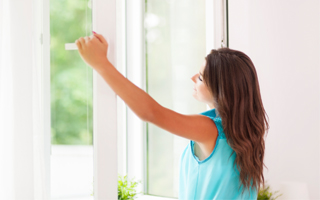
To establish the cause of sneezing and coughing, you should pay attention to the child's sleep
How to understand what caused the infant starts sneezing and coughing? First of all, you need to pay attention to the general condition of the newborn and answer several questions:
- Has his dream changed?
- Has his appetite changed?
- Is there snot and is he coughing up phlegm?
- Has he become whiny and restless?
- Has his chair changed?
- Is the baby's skin normal?
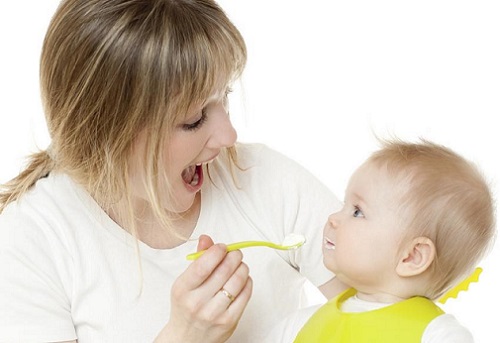
With diseases, the baby may lose appetite
If the parents answered in the affirmative to at least one question, it is worth thinking about showing the child to the doctor.
When a cough is a sign of infection
Even in the absence of fever, a cough may indicate an upper respiratory tract infection. As a rule, in infants, a cold begins with a runny nose, in which a small amount of mucus is released. It is she who becomes the cause of the cough - flowing down back wall nasopharynx, mucus irritates the receptors, and the baby begins to cough. In this case, he has a periodic moist cough and coryza with thick mucus from the nose.
Another scenario is a runny nose without a large amount of mucus, but with swelling of the nasal passages. Since the infant cannot breathe physiologically correctly, it tries to catch air through its mouth. In this case, the mucous membrane of the throat becomes dry, perspiration occurs, which is why the newborn coughs without sputum.
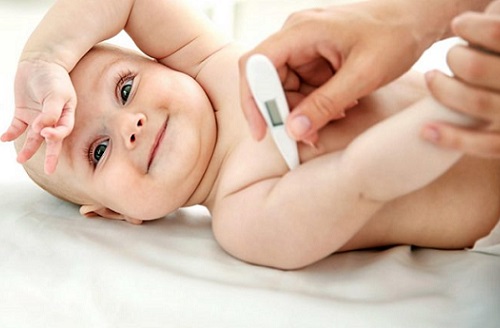
Despite the normal temperature, you should not ignore the appearance of a cough and sneeze in a baby
How to understand that this is an infection:
- the child does not sleep well, often cries, rubs his nose and eyes;
- he has diarrhea;
- the child bends his back, knocks his legs or, conversely, becomes inactive;
- the baby reacts by crying when touching the ears, head.
Besides coughing and sneezing, infectious diseases may be accompanied by inflammation of the conjunctival mucosa. At the same time, after waking up, the eyelids stick together in the baby, crusts are visible on the cilia, and the eyelids swell and turn red.
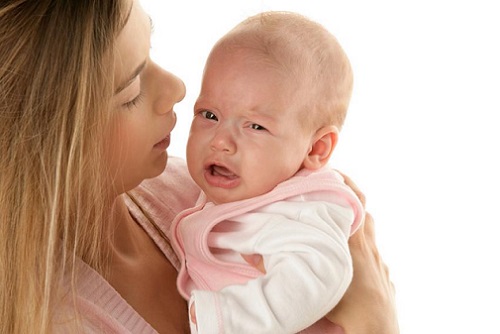
Regular tearfulness against a background of coughing may indicate a child's illness
It is very dangerous to ignore an infectious cough that is not accompanied by an increase in temperature. Since the body does not interfere with the activity of viruses and bacteria, they can penetrate the internal organs (lungs, digestive tract) and provoke life-threatening conditions for the baby.
Important! If the cough and snot bother the child for more than a day, but there is no temperature, we can talk about an immunity crisis. Such newborns require hospitalization and treatment with specific immunoglobulins in the form of injections.
Allergic cough in newborns
Babies rarely suffer from allergic coughs, but doctors consider such conditions as dangerous as respiratory tract infections. An atypical reaction of the body to the penetration of certain irritants into it can lead to edema and obstruction of the airways. In about 12% of babies in the first months of life, allergies lead to attacks of asphyxia - suffocation, which is expressed by blue lips and mucous membranes, loss of consciousness.
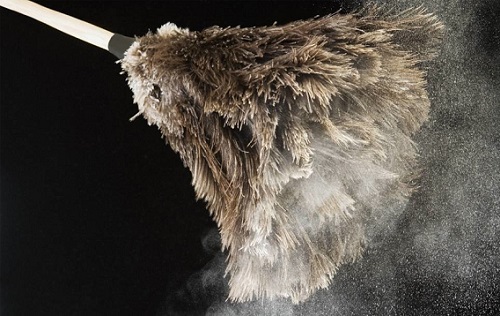
Sneezing with a cough and without fever may occur if the room is dusty
With allergies, the baby coughs and sneezes after contact with certain objects. It can be a thing that contains natural wool, feather or down. You can understand that this is an allergy, and not an infection, by the following signs:
- the cough is dry, its character does not change for a long time;
- watery eyes, even if the child is not crying;
- nose is stuffed up, but no snot.
In some cases, babies, along with breathing problems, have a skin reaction in the form of a rash, itching. Most often this happens when you are allergic to chemical substances... They can be found in washing powder or fabric softener, cream, and other skin care products.
![]()
When allergic cough an additional symptom may be a skin rash and redness
Interesting fact! Very often, children from the first month of life are allergic to perfume used by their parents. At least they are diagnosed with food or infant formula intolerance.
Allergic cough needs urgent treatment, as the likelihood of complete airway obstruction at this age is too high. Before prescribing a medicine, the doctor prescribes allergy tests to identify the allergen. The main drugs for eliminating unpleasant symptoms are antihistamines.
When coughing is not a cause for concern
In comparison with a pathological cough, with a physiological cough, fears for the baby's health should not arise. However, how to distinguish that same healthy cough from an unhealthy one? Parents will need to watch their children carefully. If the coughing does not cause discomfort, the child continues to play, does not start crying, it is not a matter of illness or allergies.
![]()
Coughing is normal when a child's first teeth are erupted.
Experts believe that a two-month-old baby coughs 10 to 20 times a day, depending on the humidity in the room and its purity. A healthy child sneezes up to 5 times a day. Starting from 3 months, the cough can become more frequent due to the more active life of the baby - the child moves more, is more often in an upright position, due to which natural sputum flows better. And it can become more frequent up to 25-30 times a day due to profuse salivation.
Important! A physiological cough is also considered a case if in airways a foreign object has hit. Since such cases can lead to aspiration, it is important for parents to provide first aid to the baby, and then show it to the doctor.
When there is no temperature, and the child sneezes and coughs, parents should take a closer look at the behavior and general condition of the baby. Sometimes these symptoms do not mean anything bad, but in some cases, the newborn needs help. In order not to be mistaken with the conclusions, it is worth consulting a pediatrician. He will tell you what to do in this or that case, and will help you find a medicine if the baby is really sick.
The reasons that cause sneezing in a child will be discussed in the video:
If a newborn baby sneezes and coughs, then a pediatrician should be invited home as soon as possible. This symptom manifests itself with a viral, cold or infectious inflammation. Lack of treatment at such a small age will have a detrimental effect on the health of the baby, so you should not risk it. However, in some cases, a cough with sneezing in a child manifests itself as a physiological process, which carries no risk.
In this case, the attending physician will tell you how to determine the onset of the inflammatory process, and how the adaptive cough manifests itself. In addition, there are about twenty more reasons when a baby has a reflex process. As a hint, we will identify the main factors, and also tell you what to do if a month old baby coughs and sneezes.
The reasons for the formation of cough in a newborn child are always different. But more often than not, this process is natural. Physiological process arises as an adaptation of the body to new conditions and takes place within two or three days. At this time, the baby should not have a fever or other symptoms.
Normally, a child can sneeze or cough about fifteen times a day. Thus, a natural adaptation of the body takes place.
If you notice that the baby began to toss and turn often, cry for no reason, refuse to eat, you should check for a cold infection... As a rule, with an infectious nature in a child elevated temperature, pain in the throat, redness of the mucous membranes and other symptoms.
In addition, experts highlight the following reasons for the formation of cough:
- The reflex process can appear if the baby lies on his back for a very long time. Since the child does not yet know how to swallow saliva, a protective process appears in the form of a cough.
- A cough may appear immediately after eating. Thus, the baby coughs up the remaining milk.
- If the air in the living area is excessively dry, a cough is manifested due to severe irritation of the mucous part. These reasons include cigarette smoke, dust, and other chemicals.
- In the case of the formation of a cough, which is accompanied by acute symptoms, we are talking about an inflammatory process in the upper respiratory tract. Prolonged cough should alert parents.
Important! If the cough continues for more than three days, a pediatrician should be called. In the event of the formation of acute symptoms, treatment should be started on these days.
The cause of cough may lie in the development of acute respiratory disease, bronchitis or pharyngitis. At this time, the baby has a dry and unproductive cough, which after the third day is replaced by a productive form.
Necessary treatment
If the baby coughs and sneezes, but there is no temperature, attention should be paid for other signs. In the early days, the disease may not show acute symptoms. To determine the true cause of the formation of the disease, you should consult a doctor, since the wrong choice medicines can worsen the condition of the baby.
Remember! The anatomy of a baby is very different from the respiratory system in adults, so it cannot be treated in the same way.

A long-term cough in a toddler can cause choking, so do not delay treatment.
To cure a cough, it is important to establish the real cause of its manifestation. After a thorough diagnosis, the child is prescribed medication.
The importance of drinking
To speed up the healing process, the child must take plenty of clean water... The liquid normalizes the water-salt balance, which will reduce the inflammatory process.
Everyone knows that water improves the rheological properties of the blood flow, which allows the return of functions in the mucous membrane... This process improves the activity in the bronchial tree and stabilizes the mucus production. In addition, together with the liquid, pathogenic strains that cause intoxication are excreted from the body of the little patient.
To normalize the amount of fluid in the baby's body and eliminate pathogenic microflora, the child can be given clean water, herbal decoctions, as well as freshly squeezed juices or natural compotes. In addition, it will be useful for the child to take teas with honey, raspberries or lemon.
Remember! Breast milk is not liquid!
To make the water easier to drink, make sure it is not excessively hot or cold. Fluid at body temperature is best absorbed.
Sanitation of the nasal cavity
When sneezing in the nasal cavity, blockage of the nasal passages. Since breathing in babies occurs precisely through the accessory sinuses, the accumulation of mucus can lead to severe respiratory failure. In addition, thick secretions can enter the throat and cause a violent cough.
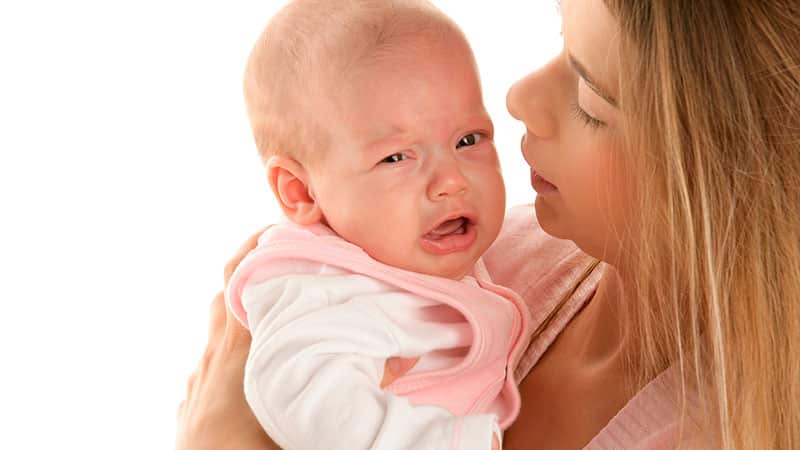
To maintain breathing during inflammation, the baby's nasal passages should be cleaned hourly.
In order to clear the nasal passages in infants, use salinewhich can be purchased at the pharmacy or prepared by yourself... If you prefer the second option, then dissolve a small amount of salt in one glass of water. In addition, the sanitation of the air cavities can be carried out using decoctions of chamomile or thyme.
Excess secretions should be eliminated with ordinary cotton swab.
Saline solutions should be used if a 2 month old baby coughs and sneezes for more than three days.
If you are looking for an isotonic agent, the best drugs for the treatment of children are considered - "", "", "Marimer", "Humer", "No-Sol".
Drug therapy
Before you start taking any medications it is necessary to establish the true cause of the cough. Until this point, the use of medicines is strictly prohibited.
- To restore the breathing of a baby with a dry cough, you should not immediately use antitussives. To begin with, use either a medical blower to sanitize the nasal cavity.
- If the methods at hand did not help, the child is prescribed agents that improve mucus excretion... To do this, you can use herbal medicines - "Mukaltin", "Ambroxol", "Bromhexin".
- If the cough has allergic nature, the baby needs antihistamines - Suprastin, Tavegil, Fenistil, Tsetrin, Zirtek, Zodak. But first of all, you should establish the type of stimulus and eliminate it.
- When coughing viral nature , the kid needs local remedies. If the child is 3 months old or more, the use of "Grippferon" or "Interferon" is allowed.
- To improve the functionality of the nasal cavity, use vasoconstrictor drops "Collargol", "Nazivin" or "Otrivin". However, you can use drops of this kind for the treatment of infants no more than once a day for three days.
- If the baby has a cough accompanied by profuse discharge, but at the same time he does not have a temperature, get an anti-inflammatory agent in the form of Viprosal ointment.
- Throughout the course of treatment, it is important support the body's immune system. To do this, take vitamins.
- If the cough is bacterial in nature, you cannot do without local antibacterial funds... For the treatment of babies, you can use local nasal drops "Isofra", "Polydex" or "Bioparox". Remember that the use of systemic antibiotics is highly discouraged.
- If the cough is accompanied by a fever, use antipyretic of the first generation - Butadion, Diklak, Diclofenac, Naproxen, Nurofen.
To facilitate the well-being of the child, you should pay attention to the conditions of his life. To avoid the manifestation of acute symptoms, you should:
- Ventilate rooms three times a day.
- Don't forget about the importance of wet cleaning.
- Make sure that the child does not hypothermia.
- Rinse the baby's nasal cavities every day.
- Monitor the humidity in the living room. In order not to control this process, set the humidifier. You can choose the best device using this article.
These points will not relieve you of inflammation, but will significantly improve the well-being of the child.
Conclusion
In case of an inflammatory process in a baby, it is necessary to choose the right treatment, since the unjustified use of drugs will only worsen the child's condition. Do not take traditional medicine methods without your doctor's approval, as many herbs can cause unwanted effects.
In addition, do not forget about your baby's personal hygiene and nutrition.
First, you should find out why the newborn, the reasons for such a reaction of the body. Knowing the reason will allow you to act on the situation. Only awareness will allow you to start an effective fight against the common cold.
Physiological factors
If a newborn sneezes and coughs, it is not necessarily due to illness.
Often, the newborn sneezes a lot due to natural physiological reasons. The fact is that up to 2.5 months, children develop airways.
The eustachian tube, which connects the nasopharynx and the tympanic cavity, is still in the process of formation. As a result, when breastfeeding, the baby can tickle in the nose, which causes sneezing.
According to pediatricians, sneezing in newborns can be explained simply: while the child was in the womb, mucus accumulated in his nasopharynx, and after childbirth, the body seeks to clear the airways that were not previously used because oxygen was supplied along with the mother's blood.
A characteristic feature of newborns is the location of the nasal passage at a special angle, as a result of which edematous and inflammatory processes rapidly spread to the larynx, trachea, bronchi. Therefore, you need to be able to recognize the disease at an early stage.
Also, the newborn sneezes and it is normal when the mother is breastfeeding him. This reaction is due to the fact that the Eustachian tube has not yet formed. When the baby sucks, he feels a tickling in the nasopharynx. This causes him to sneeze periodically.
Other factors
If the nature of such a reaction of the body is not allergic or cold, then you should not worry. Breathing will soon return to normal by itself.
Children and adults sneeze for the same reasons. The exceptions are newborns and infants, in whom this phenomenon is due to adaptation to the environment.
The infant exhibits all the natural reflexes inherent in adults. Pediatricians note that a newborn sneezes in order to clear the nasopharynx of irritants. Pectoral, because his nostrils are still very small and even a drop of mucus can cause such a reaction.
If the baby coughs and sneezes, the development of bronchitis should be excluded.
An infant may also sneeze for the following reasons:
1. Dry air (this is how infants often react to the starting heating season).
2. Accumulation of dust on various objects with a porous surface.
3. The presence of allergens (wool with saliva, animal secretions, pollen, cosmetics, unusual food and various chemical compounds).
4. The presence of smokers next to the child. The baby begins to cough, sneeze, tears appear, redness on the skin.
5. Conversion of nasal mucus into dried crusts. As a result, they get irritated nerve endings and the baby sneezes.
Possible allergens
The answer to the question of why a newborn sneezes may lie in his nutrition. Sometimes the inclusion of a new product in the diet causes allergies.
If a mother is breastfeeding her baby, she needs to adjust her diet to eliminate the presence of potentially allergenic substances in milk.
If parents suspect a pet's hair is an allergen, a clinical study should be submitted to confirm the concern. With a positive result, deliverance  from the animal is not at all the only way out of the situation. Perhaps the problem will be solved by the use of shampoos, sprays to reduce the allergy of wool.
from the animal is not at all the only way out of the situation. Perhaps the problem will be solved by the use of shampoos, sprays to reduce the allergy of wool.
Also for the period breastfeeding child's parents, it is advisable to quit smoking or at least wash thoroughly and change outerwear after smoking.
If you regularly ventilate the child's room, humidify the air, pathogenic bacteria will die.
Cold factor
If a newborn child sneezes often, snot forms, his temperature rises, and a cough begins, these signs often indicate a cold. The likelihood of its occurrence is quite high, since the immunity of a child under one year old is still weak and easily reacts to the causative agents of acute respiratory infections - viruses, bacteria.
A slight hypothermia can lead to a runny nose, and overheating is also dangerous: due to the loss of moisture with profuse sweating, the natural defense mechanism is weakened.
The nasal cavity is a favorable place for the active reproduction of pathogenic bacteria. Due to their penetration into the body, mucus is deposited in the nose, which makes breathing difficult.
In turn, all transferred diseases contribute to the fact that the child's immunity is more actively formed.
Causes of hiccups
Often, a newborn often hiccups and sneezes. The causes of hiccups can be different, but sometimes it is enough to wrap the child warmly to eliminate it.
Hiccups also occur due to physiological factors.
Often this symptom is a consequence of the incorrect angle of inclination of the child when feeding, overeating. Since the baby still has a small stomach, when it is stretched, the diaphragm experiences 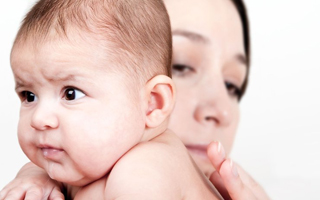 pressure. This causes convulsive seizures. At the same time, the remaining milk is pushed out - belching occurs.
pressure. This causes convulsive seizures. At the same time, the remaining milk is pushed out - belching occurs.
If a mother is bottle-feeding her baby, an incorrect nipple may be the cause. Often the shape of this device leads to the swallowing of air bubbles along with the contents of the bottle, which causes hiccups.
The baby's nervous system still has insufficient control over the diaphragm, but over time, everything falls into place.
Temperature norm for children of different ages
When a baby sneezes at 4 months after taking a temperature measurement, parents often panic. However, it should be borne in mind that the norm for this age is 37 degrees. In addition, the evening is characterized by a higher temperature, and a lower temperature in the morning.
If a child is 6 months old sneezes and his temperature rises a lot, this may mean the presence of SARS, flu. In this age normal rate the mark is considered to be 36.6.
If the baby coughs and sneezes, but there is no temperature, the presence of acute respiratory infections can be excluded. However, the child should still be shown to an otolaryngologist to help determine why a newborn is sneezing.
If a two month old baby sneezes
If a child sneezes at 2 months, it is useful for him to drink plenty of water: boiled milk, natural juices, tea, compote. It is too early to treat such a baby with drops, antibiotics.
If you notice that a baby often sneezes at 2 months, he has snot, you need to eliminate possible allergens from the nursery. The air in this room must be clean and humid. Provide periodic air currents by ventilating the room more often. A child at 2 months sneezes and coughs if pathogens get a chance to survive.
It is necessary to prevent the drying of mucus in order to avoid obstructive bronchitis, pneumonia.
If a child coughs and sneezes at 3 months, the pediatrician will determine if such symptoms are of a cold nature. Sign of presence colds is thick, yellowish mucus.
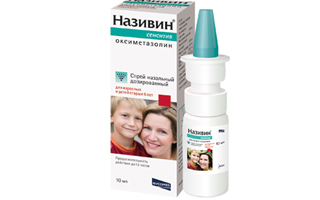 If a child coughs and sneezes at 4 months, you need to monitor his health. If it worsens, call a doctor. If there is phlegm in the lungs, the doctor will most likely prescribe mucolytics - drugs that accelerate the passage of mucus. You may also need vibrating chest massage. If sputum is absent, treatment will be more effective with cough suppressants.
If a child coughs and sneezes at 4 months, you need to monitor his health. If it worsens, call a doctor. If there is phlegm in the lungs, the doctor will most likely prescribe mucolytics - drugs that accelerate the passage of mucus. You may also need vibrating chest massage. If sputum is absent, treatment will be more effective with cough suppressants.
If a child sneezes for 5 months, you can use the drug Nazivin. The maximum treatment period for infants from 3 months is 3 days. This drug reduces swelling in the nose, inhibits the formation of mucus, increases its viscosity.
Sneezing and coughing in a child 3-6 months
If a child is 6 months old sneezes and snot does not allow breathing freely, use drops that can be used from 3 months. These drugs have different effects: moisturizing, vasoconstrictor, antiviral.
If the baby sneezes and coughs, this almost always indicates an infection. That the child hurts when sneezing rib cage, you can guess by clicking on it in the middle.
If a newborn child coughs and sneezes, it is recommended to use nasal drops Aquamaris, Aqualor baby, Derinat (they have an immunomodulatory effect).
Coughing and sneezing in babies can also occur when foreign body into the nose. To eliminate the symptom, you need to remove the foreign object.
Sneezing and runny nose in seven month old babies
Often, children aged 7 months have a runny nose if the room they are in is poorly ventilated. The pathogens contained in the dust cause snot in the baby, and he sneezes in order to make breathing easier.
Therefore, a newborn sneezes and snot are also the result of an allergic reaction. To prevent this phenomenon, parents should more often take the child out for walks and ventilate his room.
Observe if the child is 7 months old with snot and sneezes after eliminating allergens. If the runny nose continues, it is caused by a cold.
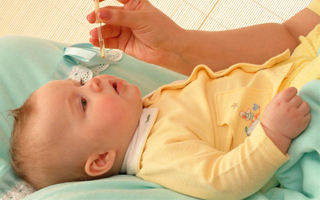 Snot in a child of 7 months, like in children older than this age, most often indicates a cold. Due to the fact that the nasal passage at this stage of life is quite narrow, any viral infection provokes congestion.
Snot in a child of 7 months, like in children older than this age, most often indicates a cold. Due to the fact that the nasal passage at this stage of life is quite narrow, any viral infection provokes congestion.
For a child who is already 7 months old, an otolaryngologist may prescribe a lavage.
How to clear mucus from a child's nose
Often, the tender mucous membrane of the child's nose is irritated by dried crusts, which he cannot remove on his own. Therefore, the baby's nostrils need to be cleaned. For this purpose, you cannot use a cotton swab, only a cotton flag dipped in warm boiled water. The cotton swab is placed in the nostril, then turned clockwise. After cleaning one nostril, the flagellum is changed and the next nostril is cleaned.
White snot leaves on its own, so there is no need to look for a way to remove them. It is enough to rinse the nostrils with an isotonic solution of sea water. A 3 month old baby should be instilled with a few drops of salt solution.
If a child sneezes at 3 months, snot forms in his nose, this most often indicates the presence viral infection.
The presence of a viral infection can be ascertained if the color of the mucus changes from white to green, and the consistency becomes more viscous, which prevents its discharge from the nose. In this case, the nostrils must be cleaned regularly. For this purpose, you can use special devices: aspirators, pears. In the absence of such in the house, you can use an ordinary syringe without a needle.
Means of combating children's rhinitis
Nasal congestion is indicated by the following signs: shortness of breath, sneezing, intermittent sucking on the breast.
When a child reaches 6-7 months, a runny nose may occur due to teething. This is indicated by swelling in the gum area, an increase in temperature.
Many medicines for the common cold are allowed only from the age of two. In such a situation, solutions containing salt of the Adriatic are an excellent alternative for babies. 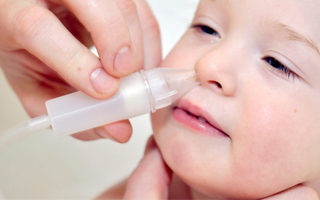 seas. You do not need a doctor's prescription to purchase these drugs, and their dosage is practically unlimited. Safe means for rinsing the nose, ordinary saline is also used.
seas. You do not need a doctor's prescription to purchase these drugs, and their dosage is practically unlimited. Safe means for rinsing the nose, ordinary saline is also used.
It is also advisable to purchase an inhaler that can be used to alleviate the condition of children under the age of one year.
According to pediatricians, a mild runny nose in children over 2 years old can be left untreated, since the immune system can already cope with the disease on its own.
Treatment
If the baby sneezes frequently, and his temperature rises, breathing becomes difficult, and a cough begins, he should be immediately shown to a doctor who will prescribe effective treatment.
First of all, you need to find out why the baby sneezes often.
For treatment, you can resort to this folk remedylike herbal inhalation. For this purpose, you can use mint, chamomile, eucalyptus, bay leaf. But this therapy should be done very carefully so as not to cause allergies. It is useful to massage the active points on the nose, apply a curd compress.
To prevent the accumulation of mucus in the sinuses, babies with a severe runny nose should be placed so that their head is raised.
To avoid pneumonia, everything must be done to ensure that the child continues to breathe through the nose. If the baby begins to involve his mouth in this process, his condition will inevitably worsen: the pulmonary mucus will dry out, the bronchi will become clogged, and inflammation will begin.
Prevention
Occasionally, a baby coughs and sneezes, trying to clear the large accumulation of phlegm in the lungs. To avoid this condition, you need to avoid the accumulation of dust and pathogens: ventilate the room, do wet cleaning.
This reaction of the body is also caused by such external stimuli as aromatic pungent odors. Therefore, you need to refresh the air naturally, and not with the help of chemicals. Therefore, you should get rid of the habit of spraying various fragrances in the children's room. The interior of this room should consist mainly of items based on natural 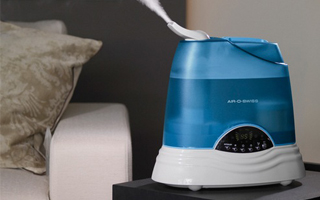 materials.
materials.
The effects of factors that provoke drying out, irritation of the nasal mucosa should be minimized.
Regular preventive measures should be wet cleaning, airing the room, dust removal. It is better that there are no soft toys, fluffy carpets in the room.
